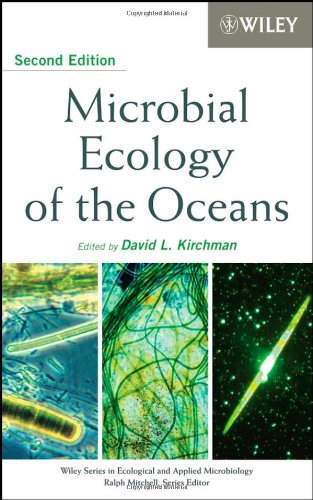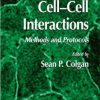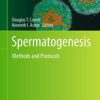(EBOOK PDF)Microbial Ecology of the Oceans 2nd Edition by David Kirchman 9780470281833 0470281839 full chapters
$50.00 Original price was: $50.00.$35.00Current price is: $35.00.
Microbial Ecology of the Oceans 2nd Edition by David Kirchman – Ebook PDF Instant Download/Delivery: 9780470281833, 0470281839
Full download Microbial Ecology of the Oceans 2nd Edition after payment

Product details:
• ISBN 10:0470281839
• ISBN 13:9780470281833
• Author:David Kirchman
“I would strongly recommend it for library purchase and the reading list of advanced students in this field.”
—Microbiology Today, May 2009
Nearly a decade since its landmark publication, this book has been thoroughly revised in this valuable new edition
Like the successful first edition, Microbial Ecology of the Oceans, Second Edition is unique and fills a void in the rapidly growing fields of marine microbiology, microbial ecology, and microbial oceanography. Here, a carefully selected team of international experts explores issues of enduring importance to microbial ecologists, including:
Genomes and metagenomes of marine microbes
Microbial evolution, as revealed by molecular techniques
Microbes in carbon budgets and cycles
Viruses and grazers of bacteria
Microbes and N cycle reactions in sediments
The role of microbes in food web dynamics
Biogeochemica…
Microbial Ecology of the Oceans 2nd Table of contents:
1 INTRODUCTION AND OVERVIEW (David L. Kirchman).
Eukaryotic Phytoplankton and Cyanobacteria.
Photoheterotrophic Bacteria.
Dissolved Organic Material.
Heterotrophic Bacteria.
Marine Archaea.
Heterotrophic Protists.
Nanoflagellates (2–20 µm).
Microzooplanktonic Protists (20–200 µm).
Dinoflagellates.
Marine Fungi.
Marine Viruses.
N2 Fixers.
Nitrifiers and Other Chemolithotrophs.
Denitrifiers.
2 UNDERSTANDING ROLES OF MICROBES IN MARINE PELAGIC FOOD WEBS: A BRIEF HISTORY (Evelyn Sherr and Barry Sherr).
Pre-1950s: The Early Years.
1950–1974.
1970s–1980s.
Improvement in Methods.
Bacterial Abundance.
Bacterial Activity.
Marine Heterotrophic Protists.
The “Microbial Loop”.
1990–Present: The Molecular Revolution.
3 BACTERIAL AND ARCHAEAL COMMUNITY STRUCTURE AND ITS PATTERNS (Jed A. Fuhrman and Ake Hagstrom).
Major Groups of Prokaryotes in Seawater.
“Classically” Culturable Bacteria.
The Roseobacter Clade of Marine Alphaproteobacteria.
Gammaproteobacteria.
Bacteroidetes.
Cyanobacteria.
“Sea Water” Culturable Bacteria.
SAR11 Cluster.
Not-Yet-Cultured Bacteria.
Marine Gammaproteobacterial Clusters.
Actinobacteria.
SAR116 Cluster.
SAR202.
Marine Group A.
Marine Group B.
Betaproteobacteria.
Marine Archaea.
Bacterioplankton Diversity.
Species Concept.
Microdiversity.
Components of Diversity: Richness and Evenness.
Community Structure: Description and Factors.
Bottom-Up Control.
Sideways Control.
Top-Down Control.
“Kill the Winner” Hypothesis.
Temporal Variation (Days to Seasonal).
Short-Term Variation.
Seasonal Variation.
Spatial Variation.
Microscale Patterns.
Global Distribution.
Latitudinal Gradient and Degree of Endemism.
Patchiness and Large Eddies.
4 GENOMICS AND METAGENOMICS OF MARINE PROKARYOTES (Mary Ann Moran).
The Basics of Prokaryotic Genomics.
Genome Sequence and Assembly.
Finding Genes.
Finding Operons.
Functional Annotation.
Tame or Wild? Pure-Culture Genomics Versus Metagenomics.
Genomics in Marine Microbial Ecology.
The Ecology of Genome Composition.
Reverse Biogeochemistry: Discovery of New Ecological Processes.
Environmental Reductionism: New Details About Recognized Processes.
Comparative Genomics and Metagenomics.
Future Directions.
5 PHOTOHETEROTROPHIC MARINE PROKARYOTES (Oded Beja and Marcelino T. Suzuki).
Facultative Photoheterotrophy by Unicellular Cyanobacteria.
Cyanobacteria as Facultative Heterotrophs.
Uptake of Urea and DMSP.
Uptake of Nucleosides and Amino Acids.
Field Studies Using Light and Dark Incubations.
Implications of Facultative Photoheterotrophy by Cyanobacteria.
Marine AAnP Bacteria: Habitats and Diversity.
Rediscovery of the Marine AAnP Bacteria.
Diversity of AAnP Bacteria.
Physiology of AAnP Bacteria.
AAnP Bacterial Abundance and Ecological Significance.
Proteorhodopsin-Containing Prokaryotes.
Proteorhodopsin Genotypes and Taxonomic Distributions.
Proteorhodopsin Spectral Tuning.
Proteorhodopsin-Containing Prokaryotes: Abundance and Activity.
Proteorhodopsin-Containing Prokaryotes: Ecological Significance.
6 ECOLOGY AND DIVERSITY OF PICOEUKARYOTES (Alexandra Z. Worden and Fabrice Not).
Functional Roles, Classification, and Biological Traits.
Photoautotrophs.
Heterotrophs and Alternative Lifestyles.
Environmental Diversity and Molecular Phylogenetics.
Diversity of Uncultured Populations.
Methodological Issues for envPCR Studies.
Distribution, Abundance, and Activities.
Methods for Quantifying Mixed Assemblages.
Distribution, Abundance, and Activity of Mixed Picophytoplankton Assemblages.
Quantifying Specific Picoeukaryote Populations.
Methodological Challenges to Quantifying Specific Populations and Resolving Dynamics.
Mortality, Contributions to Microbial Food Webs, and Microbial Interactions.
Genomic Approaches to Picoeukaryote Ecology.
Integration of Picoeukaryotes to the Microbial Food Web: Research Directions.
7 ORGANIC MATTER–BACTERIA INTERACTIONS IN SEAWATER (Toshi Nagata).
Organic Matter Inventory and Fluxes.
DOM–Bacteria Interactions.
Labile Low-Molecular Weight (LMW) DOM.
Extracellular Hydrolytic Enzymes.
Polymeric DOM—Protein as a Model.
Refractory DOM.
POM–Bacteria Interactions.
POM Continuum.
POM Fluxes.
POM–Mineral Interactions.
Bacterial Community Structure and Utilization of Organic Matter.
Future Challenges.
8 PHYSIOLOGICAL STRUCTURE AND SINGLE-CELL ACTIVITY IN MARINE BACTERIOPLANKTON (Paul A. del Giorgio and Josep M. Gasol).
Distribution of Physiological States in Bacterioplankton Assemblages.
The Concept of “Physiological Structure” of Bacterioplankton Assemblages.
Starvation, Dormancy, and Viability in Marine Bacterioplankton.
Describing the Physiological Structure of Bacterioplankton.
Single-Cell Properties and Methodological Approaches.
Operational Categories of Single-Cell Activity.
Regulation of Physiological Structure of Marine Bacterioplankton.
Factors Influencing Physiological State of Bacterial Cells in Marine Ecosystems.
Factors Influencing Loss and Persistence of Physiological Fractions.
Distribution of Single-Cell Characteristics in Marine Bacterioplankton Assemblages.
Distribution of Single-Cell Activity and Physiological States in Marine Bacterioplankton.
Simultaneous Determination of Several Aspects of Single-Cell Activity and Physiology.
Patterns in Distribution of Single-Cell Activity and Physiology Along Marine Gradients.
Distribution of Activity and Growth Among Bacterial Size Classes.
Distribution of Activity Across and Within Major Phylogenetic Groups.
Dynamics of Single-Cell Activity and Physiological States.
Ecological Implications of Patterns in Bacterioplankton Single-Cell Activity.
Community Versus Individual Cell Growth and Metabolic Rates.
Linking the Distribution of Single-Cell Parameters and the Bulk Assemblage Response.
Ecological Role of Different Physiological Fractions.
9 HETEROTROPHIC BACTERIAL RESPIRATION (Carol Robinson).
Measurement of Bacterial Respiration and Production.
Routine Measurement Techniques for Bacterial Respiration and Their Limitations.
Routine Measurement Techniques for Bacterial Production and Their Limitations.
Magnitude and Variability of Bacterial Respiration.
Temporal Variability.
Spatial Variability.
Relationship Between Bacterial Respiration and Environmental and Ecological Factors.
Bacterial Respiration as a Proportion of Community Respiration.
Predicting Bacterial Respiration.
Comparison Between Measurements and Predictions of Bacterial Respiration.
Magnitude of Bacterial Respiration in Relation to Primary Production.
Bacterial Respiration in a Changing Environment.
10 RESOURCE CONTROL OF BACTERIAL DYNAMICS IN THE SEA (Matthew J. Church).
Growth in the Sea.
Growth and Nutrient Uptake Kinetics.
Approaches to Understanding Resource Control of Growth.
Comparative Approaches.
Experimental Approaches for Defining Limitation of Bacterial Growth.
Limitation by Dissolved Organic Matter.
Bacterial Growth on Bulk DOM Pools.
Limitation by Specific DOM Compounds.
Limitation by Inorganic Nutrients.
Nitrogen.
Phosphorus.
Trace Nutrients.
Temperature–DOM Interactions.
Light.
Resource Control of Specific Bacterial Populations in the Sea.
11 PROTISTAN GRAZING ON MARINE BACTERIOPLANKTON (Klaus Ju¨rgens and Ramon Massana).
New Insights into Phylogenetic Organization.
Functional Size Classes of Protists.
Natural Assemblages of Marine Heterotrophic Nanoflagellates.
Functional Ecology of Bacterivorous Flagellates.
Living in a Dilute Environment.
Using Culture Experiments to Infer the Ecological Role of HNF.
Impact of Protistan Bacterivory on Marine Bacterioplankton.
Search for the Perfect Method to Quantify Protistan Bacterivory.
Rates of Protistan Bacterivory in the Sea.
Balance of Bacterial Production and Protistan Grazing.
Bottom-Up Versus Top-Down Control of Bacteria and Bacterivorous Protists.
Ecological Functions of Bacterial Grazers.
Grazing as a Shaping Force of Bacterial Assemblages.
Bacterial Cell Size Determines Vulnerability Towards Grazers.
Other Antipredator Traits of Prokaryotes.
Grazing-Mediated Changes in Bacterial Community Composition.
Molecular Tools for Protistan Ecology.
Culturing Bias and Molecular Approaches.
Global Distribution and Diversity of Marine Protists.
Linking Diversity and Function for Uncultured Heterotrophic Flagellates.
12 MARINE VIRUSES: COMMUNITY DYNAMICS, DIVERSITY AND IMPACT ON MICROBIAL PROCESSES (Mya Breitbart, Mathias Middelboe, and Forest Rohwer).
Viruses and the Marine Microbial Food Web.
Direct Counts and Viral Numbers.
Viral Production and Decay Rates.
Viral Decay and Rates of Production in Pelagic Systems.
Measurements of Viral Production in Marine Sediments.
General Rates of Viral Production.
Role of Viruses in Biogeochemical Cycling.
Impact of Viruses on Bacterial Diversity and Community Dynamics.
Marine Viral Diversity.
Methods for Examining Marine Viral Diversity.
Culture-Based Studies of Viral Diversity.
The Need for Culture-Independent Methods.
Culture-Independent Studies of Viral Diversity Using Transmission Electron Microscopy.
Whole-Genome Profiling of Viral Communities Based on Genome Size.
Studies of Viral Diversity Using Signature Genes.
Metagenomic Studies of Viral Diversity.
A Vision for the Future.
13 MOLECULAR ECOLOGICAL ASPECTS OF NITROGEN FIXATION IN THE MARINE ENVIRONMENT (Jonathan P. Zehr and Hans W. Paerl).
Chemistry, Biochemistry, and Genetics of N2 Fixation.
Genetics and Enzymology.
Evolution of N2 Fixation.
Phylogeny of Nitrogenase.
Genomics of N2 Fixation.
Diversity of N2-Fixing Microorganisms.
Regulation in Diazotrophs.
Methods for Assessing Diazotroph Diversity, Gene Expression, and N2 Fixation Activity.
Ecophysiological Aspects of N2 Fixation.
Ecology of Diazotrophs in the Open Ocean.
Estuarine and Coastal Waters.
Benthic Habitats, Including Microbial Mats and Reefs.
Deep Water and Hydrothermal Vents.
14 NITROGEN CYCLING IN SEDIMENTS (Bo Thamdrup and Tage Dalsgaard).
Inputs.
Transformations.
Microbes and Microbial Processes.
Processes Involving Mn and Fe.
Nitrogen Budgets.
Benthic Budgets.
Oceanic Budgets.
Summary.
References.
INDEX.
People also search for Microbial Ecology of the Oceans 2nd:
microbial ecology of the oceans
microbial ecology of the oceans pdf
what is ocean ecology
ecological importance of oceans
microbial oceanography
Tags:
Microbial Ecology,Ecology of the Oceans,David Kirchman



